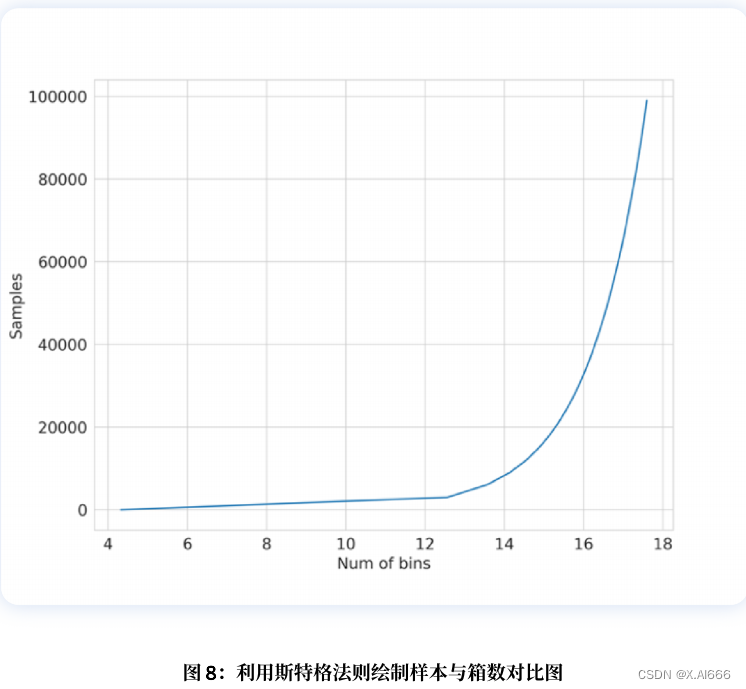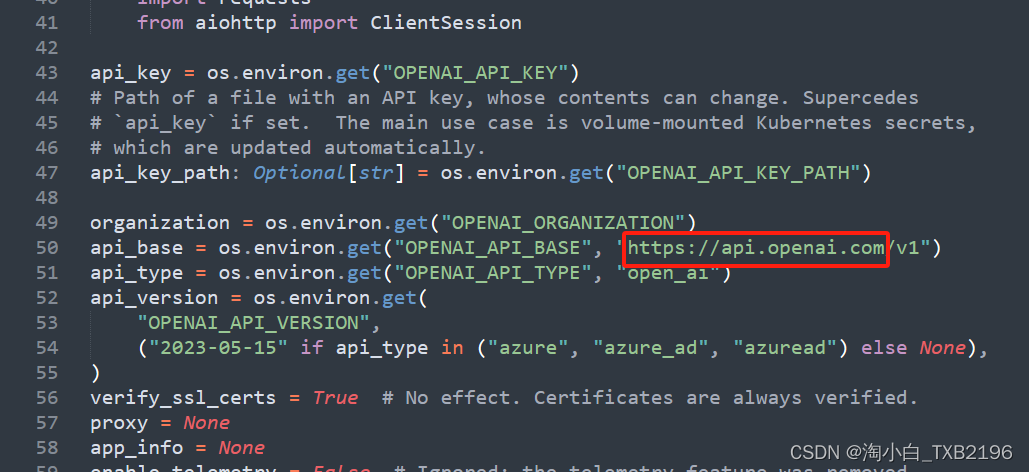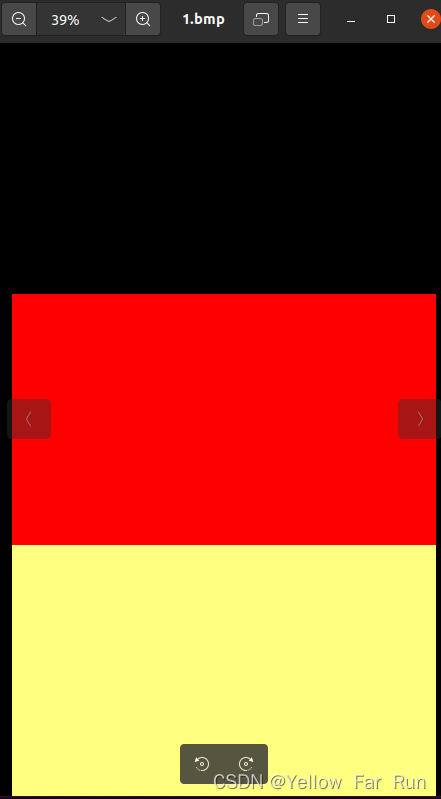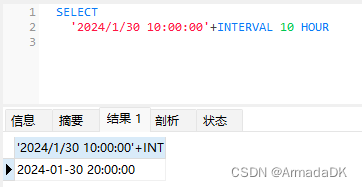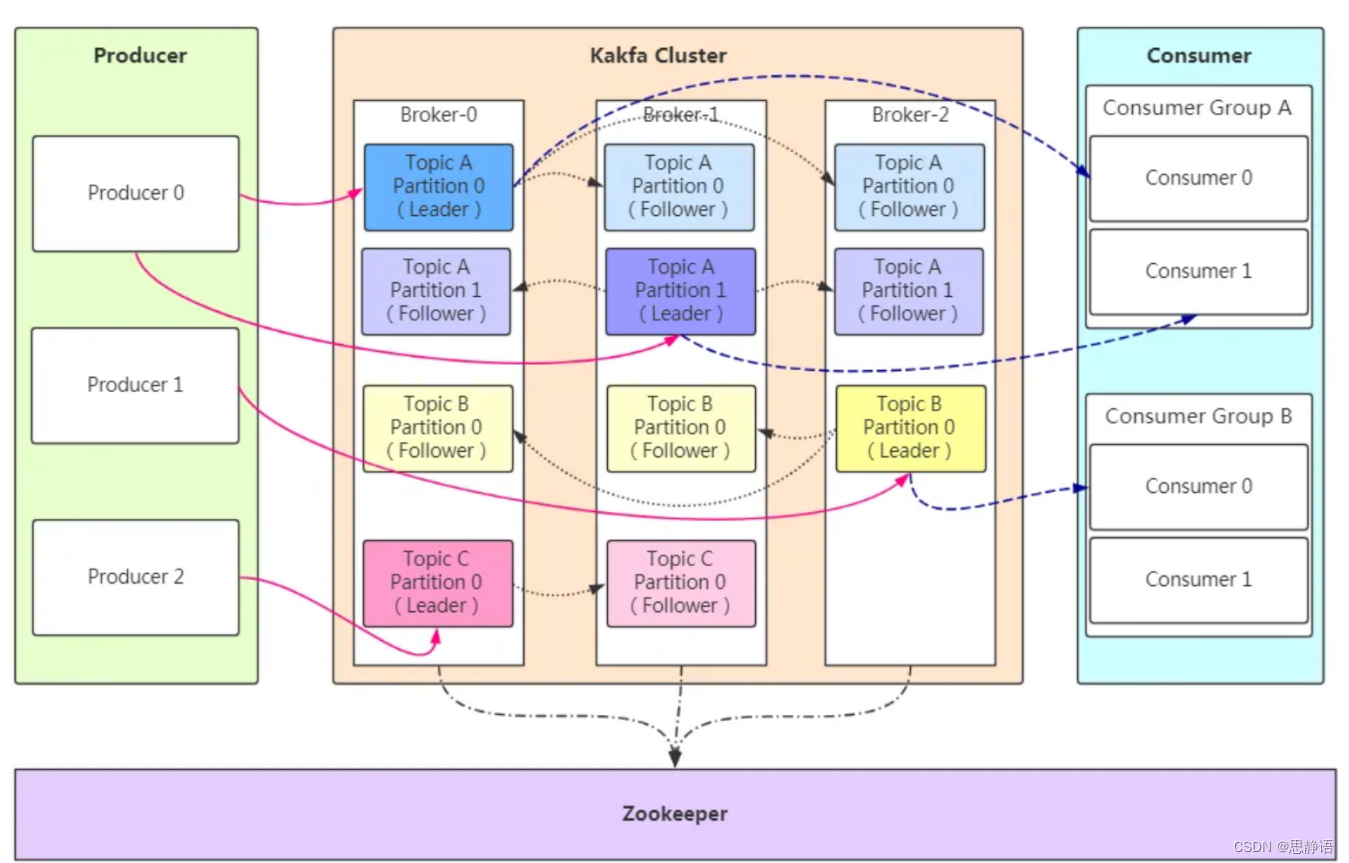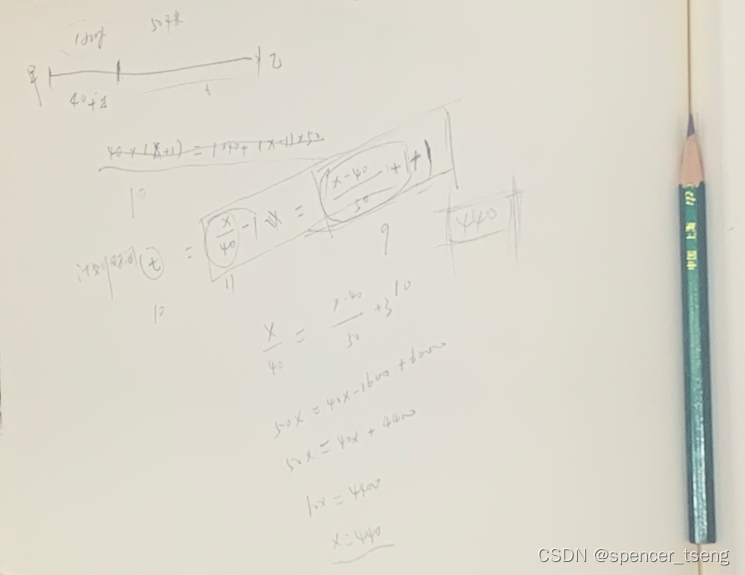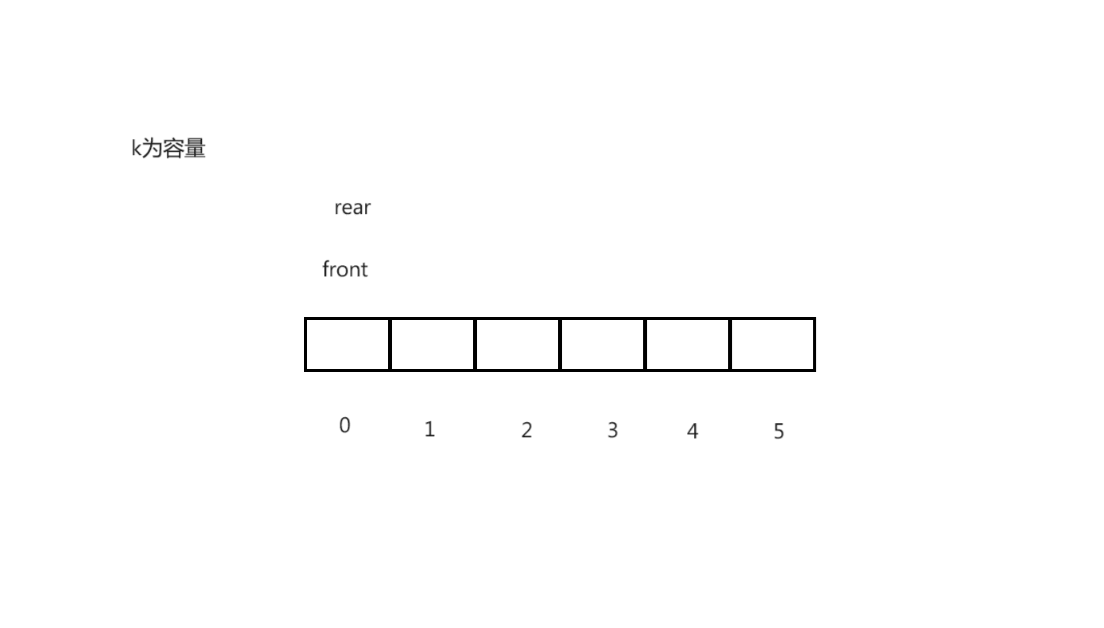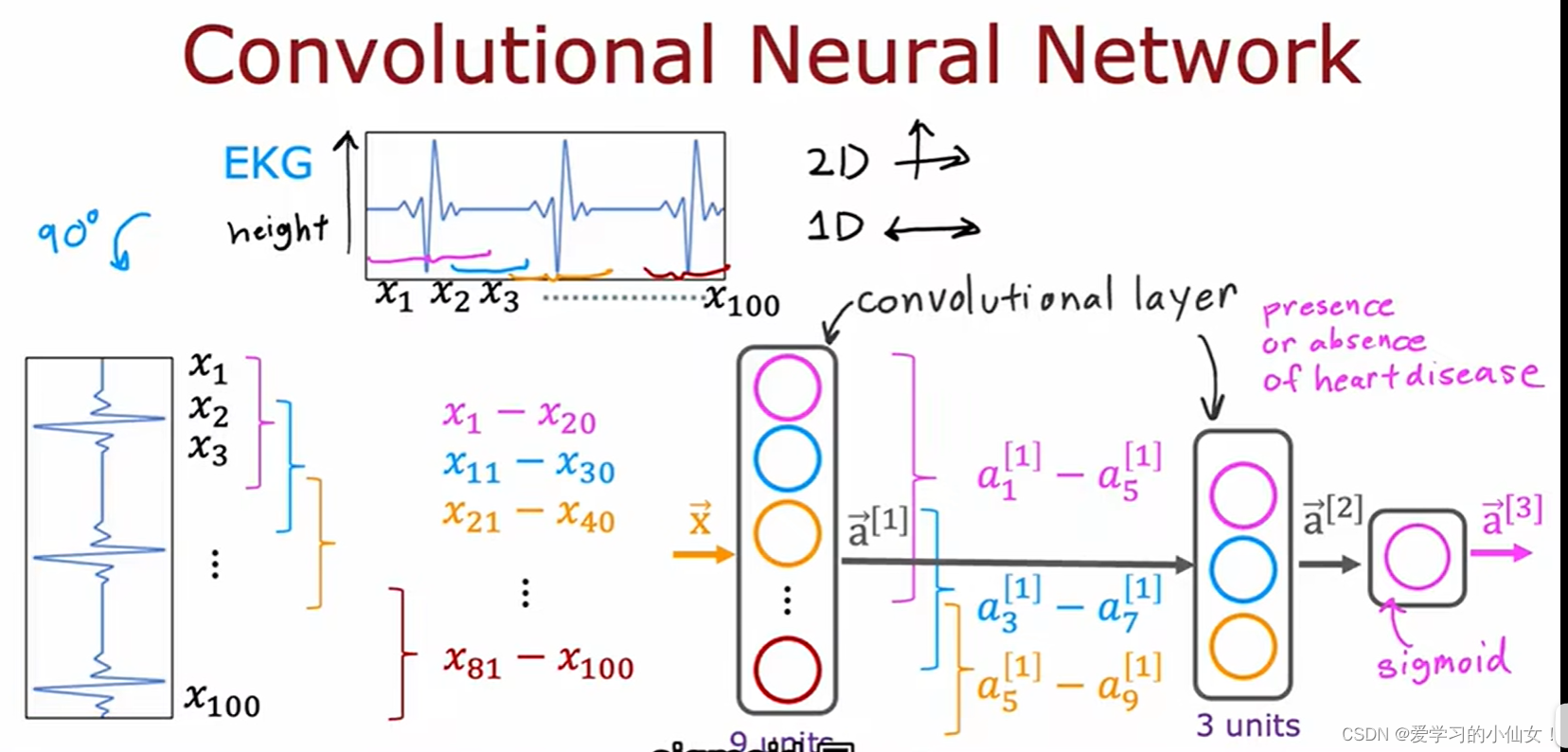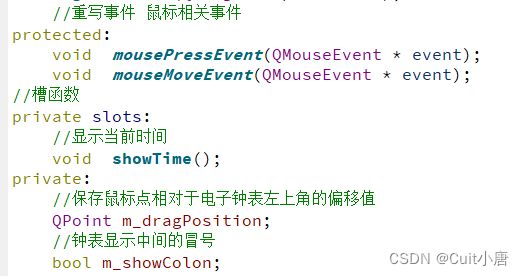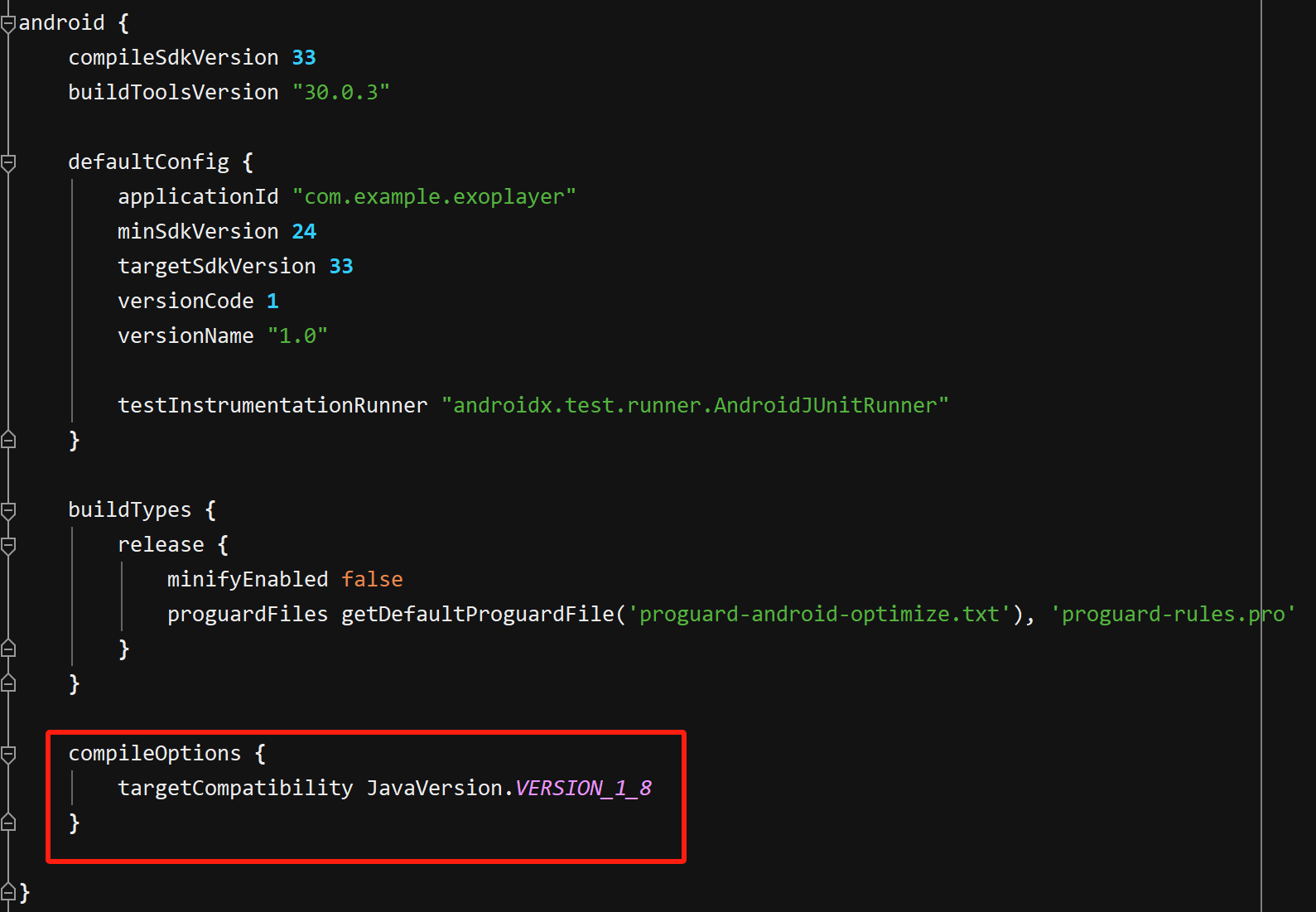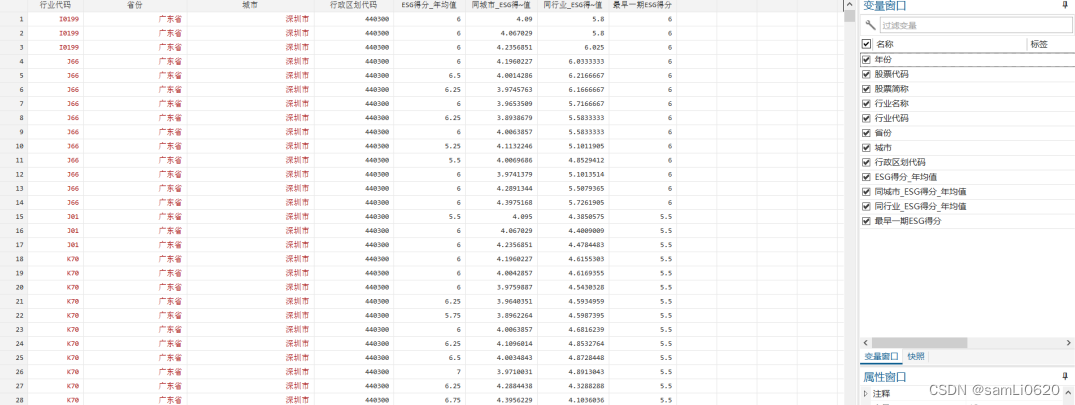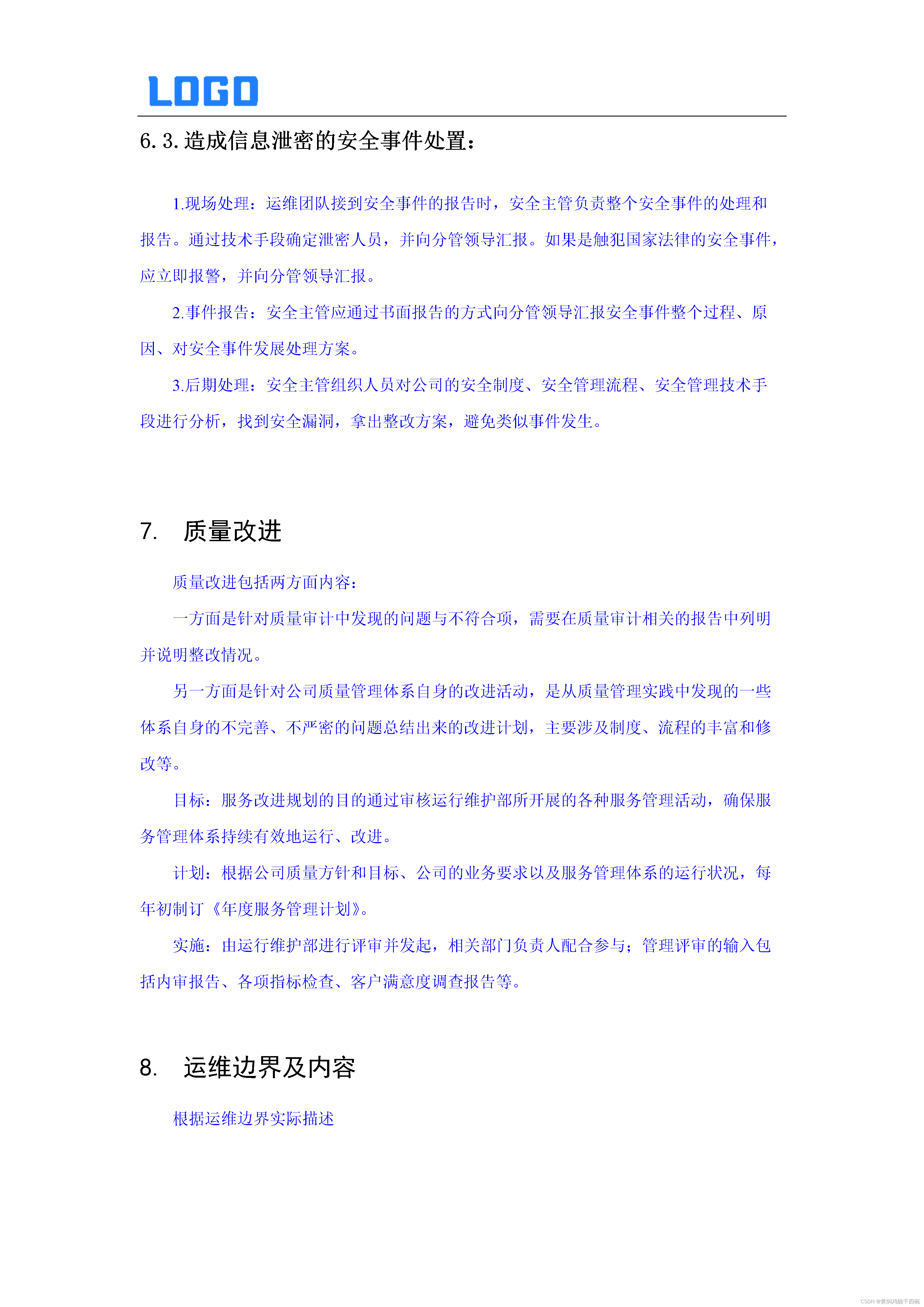🎉 本系列为Python基础学习,原稿来源于 30-Days-Of-Python 英文项目,大奇主要是对其本地化翻译、逐条验证和补充,想通过30天完成正儿八经的系统化实践。此系列适合零基础同学,或仅了解Python一点知识,但又没有系统学习的使用者。总之如果你想提升自己的Python技能,欢迎加入《挑战30天学完Python》
- 📘 Day 24
- Python统计分析
- 统计Statistics
- 数据
- 统计模型
- NumPy
📘 Day 24
Python统计分析
统计Statistics
统计学是研究数据的收集、组织、显示、分析、解释和表示的学科。
统计学是数学的一个分支,被认为是数据和机器学习的先决条件。它是一个非常广泛的领域,但在本篇的学习中只关心最相关的部分。
在完成本挑战后,你可以进行web开发、数据分析、机器学习和数据科学任何你感兴趣的方面深入学习。接下来让我们看看如果你需要处理一些数据,我们要怎么做吧。
数据
什么是数据?它是为了某种目的(通常是分析)而收集和转换的任何一组字符。数据可以是任何字符,包括文本和数字、图片、声音或视频。如果数据没有放在上下文中,那么它对人类或计算机来说就没有任何意义。为了从数据获得意义,我们使用不同的工具来处理数据。
数据分析、数据科学或机器学习的工作流程都是从数据开始的。可以从某些数据源提供数据,也可以创建数据。数据有结构化数据和非结构化。
数据可以是大小格式的。大多数数据类型已经在文件处理一节中介绍过。
统计模型
Python statistics 模块提供了用于计算数值数据的数学统计的函数。该模块不打算成为 NumPy、SciPy 等第三方库的竞争对手,也不打算成为针对专业统计人员的专有全功能统计软件包(如Minitab、SAS和Matlab)的竞争对手。它的目标是绘图和科学计算器。
NumPy
在第一节中,我们将 Python 定义为一种伟大的通用编程语言,但在其他流行库(numpy、scipy、matplotlib、pandas等)的帮助下,它成为科学计算的强大环境。
NumPy 是 Python 中科学计算的核心库。它提供了一个高性能的多维数组对象,以及用于处理数组的工具。
到目前为止,我们一直在使用vscode,但从现在开始,我建议使用 Jupyter Notebook。 官方地址 https://jupyter.org/ 可以使用在线IDE也可以本地安装
pip install notebook
jupyter-notebook
# 如果提示不是内部命令需要将pyhon安装目录下\Scripts配置到系统环境变量

安装numpy
$ pip install numpy
导入 NumPy
import numpy as np
# 查看版本
print('numpy:', np.__version__)
# 查看可用的方法
print(dir(np))
输出
numpy: 1.24.2
['ALLOW_THREADS', 'AxisError',....
创建 numpy 数组
int numpy
import numpy as np
# 创建 List
python_list = [1,2,3,4,5]
# 检查普通数组类型
print('Type:', type (python_list)) # <class 'list'>
print(python_list) # [1, 2, 3, 4, 5]
two_dimensional_list = [[0,1,2], [3,4,5], [6,7,8]]
print(two_dimensional_list) # [[0, 1, 2], [3, 4, 5], [6, 7, 8]]
# 将普通list转成python numpy 数组
numpy_array_from_list = np.array(python_list)
print(type (numpy_array_from_list)) # <class 'numpy.ndarray'>
print(numpy_array_from_list) # array([1, 2, 3, 4, 5])
float numpy
Creating a float numpy array from list with a float data type parameter
import numpy as np
# Python list
python_list = [1,2,3,4,5]
numy_array_from_list2 = np.array(python_list, dtype=float)
print(numy_array_from_list2) # array([1., 2., 3., 4., 5.])
boolean numpy
从列表中创建一个布尔类型numpy数组
import numpy as np
numpy_bool_array = np.array([0, 1, -1, 0, 0], dtype=bool)
print(numpy_bool_array) # array([False, True, True, False, False])
多维numpy数组
一个 numpy 数组或许有一行或多行和列。
import numpy as np
two_dimensional_list = [[0,1,2], [3,4,5], [6,7,8]]
numpy_two_dimensional_list = np.array(two_dimensional_list)
print(type (numpy_two_dimensional_list))
print(numpy_two_dimensional_list)
输出
<class 'numpy.ndarray'>
[[0 1 2]
[3 4 5]
[6 7 8]]
转numpy数组为list
import numpy as np
python_list = [1,2,3,4,5]
numpy_array_from_list = np.array(python_list)
# 我们通过tolist将numpy列表转回为python list
np_to_list = numpy_array_from_list.tolist()
print(type (np_to_list))
print('one dimensional array:', np_to_list)
<class 'list'>
one dimensional array: [1, 2, 3, 4, 5]
从tuple创建numpy数组
import numpy as np
python_tuple = (1,2,3,4,5)
print(type (python_tuple)) # <class 'tuple'>
print('python_tuple: ', python_tuple) # python_tuple: (1, 2, 3, 4, 5)
numpy_array_from_tuple = np.array(python_tuple)
print(type (numpy_array_from_tuple)) # <class 'numpy.ndarray'>
print('numpy_array_from_tuple: ', numpy_array_from_tuple) # numpy_array_from_tuple: [1 2 3 4 5]
numpy shape
在numpy有换个 shape 方法,它可以返回一个元组,表示数组(矩阵)的维度。第一个数表示行,第二个数表示列。如果数组是一维的,则返回数字的大小。
import numpy as np
two_dimensional_list = [[0,1,2], [3,4,5], [6,7,8]]
numpy_two_dimensional_list = np.array(two_dimensional_list)
nums = np.array([1, 2, 3, 4, 5])
print(nums)
print('shape of nums: ', nums.shape)
print(numpy_two_dimensional_list)
print('shape of numpy_two_dimensional_list: ', numpy_two_dimensional_list.shape)
three_by_four_array = np.array([[0, 1, 2, 3],
[4,5,6,7],
[8,9,10, 11]])
print(three_by_four_array.shape)
[1 2 3 4 5]
shape of nums: (5,)
[[0 1 2]
[3 4 5]
[6 7 8]]
shape of numpy_two_dimensional_list: (3, 3)
(3, 4)
numpy列表数据类型
数据的各种类型: str, int, float, complex, bool, list, None
import numpy as np
int_lists = [-3, -2, -1, 0, 1, 2,3]
int_array = np.array(int_lists)
float_array = np.array(int_lists, dtype=float)
print(int_array)
print(int_array.dtype)
print(float_array)
print(float_array.dtype)
[-3 -2 -1 0 1 2 3]
int32
[-3. -2. -1. 0. 1. 2. 3.]
float64
numpy数组大小
在numpy中,要知道numpy数组列表中的项的数量,我们使用size
import numpy as np
numpy_array_from_list = np.array([1, 2, 3, 4, 5])
two_dimensional_list = np.array([[0, 1, 2],
[3, 4, 5],
[6, 7, 8]])
print('The size:', numpy_array_from_list.size) # 5
print('The size:', two_dimensional_list.size) # 9
使用numpy进行数学运算
Numpy list 和 python list 不完全一样。要在Python列表中进行数学运算,我们必须循环遍历项目,但numpy可以在不循环的情况下进行任何数学运算。
这些数学操作有:
- 加 Addition (+)
- 减 Subtraction (-)
- 乘 Multiplication (*)
- 除 Division (/)
- 余 Modules (%)
- 向下取整 Floor Division(//)
- 指数 Exponential(**)
加法
# 数学运算
# 加操作
numpy_array_from_list = np.array([1, 2, 3, 4, 5])
print('original array: ', numpy_array_from_list)
ten_plus_original = numpy_array_from_list + 10
print(ten_plus_original)
列表里的数据项均加 10
original array: [1 2 3 4 5]
[11 12 13 14 15]
减法
# 减操作
numpy_array_from_list = np.array([1, 2, 3, 4, 5])
print('original array: ', numpy_array_from_list)
ten_minus_original = numpy_array_from_list - 10
print(ten_minus_original)
列表项均减 10
original array: [1 2 3 4 5]
[-9 -8 -7 -6 -5]
乘法
# 乘操作
numpy_array_from_list = np.array([1, 2, 3, 4, 5])
print('original array: ', numpy_array_from_list)
ten_times_original = numpy_array_from_list * 10
print(ten_times_original)
original array: [1 2 3 4 5]
[10 20 30 40 50]
除法
# 除操作
numpy_array_from_list = np.array([1, 2, 3, 4, 5])
print('original array: ', numpy_array_from_list)
ten_times_original = numpy_array_from_list / 10
print(ten_times_original)
original array: [1 2 3 4 5]
[0.1 0.2 0.3 0.4 0.5]
Modulus
# 模, 求余数
numpy_array_from_list = np.array([1, 2, 3, 4, 5])
print('original array: ', numpy_array_from_list)
ten_times_original = numpy_array_from_list % 3
print(ten_times_original)
original array: [1 2 3 4 5]
[1 2 0 1 2]
向下取整
# 没有余数的除法结果
numpy_array_from_list = np.array([10, 20, 30, 40, 50, 5, 8])
print('original array: ', numpy_array_from_list)
ten_times_original = numpy_array_from_list // 10
print(ten_times_original)
original array: [10 20 30 40 50 5 8]
[1 2 3 4 5 0 0]
指数
# 指数指的是求一个数的幂:
numpy_array_from_list = np.array([1, 2, 3, 4, 5])
print('original array: ', numpy_array_from_list)
ten_times_original = numpy_array_from_list ** 2
print(ten_times_original)
original array: [1 2 3 4 5]
[ 1 4 9 16 25]
检查数据类型
#int, float, bool
numpy_int_arr = np.array([1,2,3,4])
numpy_float_arr = np.array([1.1, 2.0,3.2])
numpy_bool_arr = np.array([-3, -2, 0, 1,2,3], dtype='bool')
print(numpy_int_arr.dtype)
print(numpy_float_arr.dtype)
print(numpy_bool_arr.dtype)
int32
float64
bool
类型转换
我们可以转换numpy数组的数据类型
- Int 转 Float
numpy_int_arr = np.array([1,2,3,4], dtype = 'float')
print(numpy_int_arr)
# [1., 2., 3., 4.]
- Float 转 Int
numpy_int_arr = np.array([1., 2., 3., 4.], dtype = 'int')
print(numpy_int_arr)
# [1 2 3 4]
- Int 转 boolean
numpy_int_bool = np.array([-3, -2, 0, 1,2,3], dtype='bool')
print(numpy_int_bool)
# [ True True False True True True]
- Int 转 str
numpy_int_list = np.array([1,2,3], dtype='int')
numpy_int_str = numpy_int_list.astype('str')
print(numpy_int_str)
# ['1' '2' '3']
多维数组
# 2维矩阵
two_dimension_array = np.array([(1,2,3),(4,5,6), (7,8,9)])
print(type (two_dimension_array))
print(two_dimension_array)
print('Shape: ', two_dimension_array.shape)
print('Size:', two_dimension_array.size)
print('Data type:', two_dimension_array.dtype)
<class 'numpy.ndarray'>
[[1 2 3]
[4 5 6]
[7 8 9]]
Shape: (3, 3)
Size: 9
Data type: int32
从numpy数组中获取项
import numpy as np
two_dimension_array = np.array([[1,2,3],[4,5,6], [7,8,9]])
first_row = two_dimension_array[0]
second_row = two_dimension_array[1]
third_row = two_dimension_array[2]
print('第一行:', first_row)
print('第二行:', second_row)
print('第三行:', third_row)
第一行: [1 2 3]
第二行: [4 5 6]
第三行: [7 8 9]
import numpy as np
two_dimension_array = np.array([[1,2,3],[4,5,6], [7,8,9]])
first_column= two_dimension_array[:,0]
second_column = two_dimension_array[:,1]
third_column = two_dimension_array[:,2]
print('第一列:', first_column)
print('第二列:', second_column)
print('第三列:', third_column)
print(two_dimension_array)
第一列: [1 4 7]
第二列: [2 5 8]
第三列: [3 6 9]
[[1 2 3]
[4 5 6]
[7 8 9]]
Numpy数组切片
在numpy数组中可以像普通python数组一样进行切片操作
import numpy as np
two_dimension_array = np.array([[1,2,3],[4,5,6], [7,8,9]])
# 取头两行前两列
first_two_rows_and_columns = two_dimension_array[0:2, 0:2]
print(first_two_rows_and_columns)
# 取前三行第二列
first_three_rows_and_columns = two_dimension_array[0:3, 1:2]
print(first_three_rows_and_columns)
[[1 2]
[4 5]]
[[2]
[5]
[8]]
反转数组
import numpy as np
two_dimension_array = np.array([[1,2,3],[4,5,6], [7,8,9]])
print(two_dimension_array[::])
原序输出
[[1 2 3]
[4 5 6]
[7 8 9]]
颠倒行和列的位置
two_dimension_array = np.array([[1,2,3],[4,5,6], [7,8,9]])
reverse = two_dimension_array[::-1,::-1]
print(reverse)
[[9 8 7]
[6 5 4]
[3 2 1]]
改变值
import numpy as np
two_dimension_array = np.array([[1,2,3],[4,5,6], [7,8,9]])
print(two_dimension_array)
two_dimension_array[1,1] = 55
two_dimension_array[1,2] = 44
print(two_dimension_array)
[[1 2 3]
[4 5 6]
[7 8 9]]
[[ 1 2 3]
[ 4 55 44]
[ 7 8 9]]
缺省值
import numpy as np
# Numpy Zeroes
# numpy.zeros(shape, dtype=float, order='C')
numpy_zeroes = np.zeros((3,3),dtype=int,order='C')
print(numpy_zeroes)
生成一个缺省值为零的3行3列数组
[[0 0 0]
[0 0 0]
[0 0 0]]
生成1和2 numpy数组
# Numpy ones
import numpy as np
numpy_ones = np.ones((3,3),dtype=int,order='C')
print(numpy_ones)
# Numpy twoes
twoes = numpy_ones * 2
print(twoes)
[[1 1 1]
[1 1 1]
[1 1 1]]
[[2 2 2]
[2 2 2]
[2 2 2]]
数组改造
import numpy as np
# numpy.reshape()
first_shape = np.array([(1,2,3), (4,5,6)])
print(first_shape)
reshaped = first_shape.reshape(3,2)
print(reshaped)
2行3列改造成3行2列
[[1 2 3]
[4 5 6]]
[[1 2]
[3 4]
[5 6]]
平铺一行
# numpy.flatten()
flattened = reshaped.flatten()
print(flattened)
# [1 2 3 4 5 6]
水平堆叠
import numpy as np
np_list_one = np.array([1,2,3])
np_list_two = np.array([4,5,6])
print(np_list_one + np_list_two) # 两个数组进行加运行
print('Horizontal Append:', np.hstack((np_list_one, np_list_two))) # 效果为堆叠,相当于连接起来
[5 7 9]
Horizontal Append: [1 2 3 4 5 6]
垂直堆叠
import numpy as np
np_list_one = np.array([1,2,3])
np_list_two = np.array([4,5,6])
print('Vertical Append:')
print(np.vstack((np_list_one, np_list_two)))
Vertical Append:
[[1 2 3]
[4 5 6]]
随机数
从float中生成随机数,默认一个
random_float = np.random.random()
print(random_float)
# 0.44664924485618196
指定随机生成的个数
# 指定从浮点类型生成5个随机数,返回一个列表
random_float_five = np.random.random(5)
print(random_float_five)
# [0.43111138 0.97050291 0.07330237 0.06041916 0.50213468]
指定范围生成随机数
# 从0-11之间整数类型生成随机数
random_int = np.random.randint(0, 11)
print(random_int)
同时指定生成的个数
# 生成一个2到11之间的随机整数,并创建一个单行数组
random_int_size = np.random.randint(2,10, size=4)
print(random_int_size)
# [4 9 7 5] 注意每次生成的不一样
可指定二维生成随机数
# 列子:在2-10之前生成3行3列随机数
random_int_matrix = np.random.randint(2,10, size=(3,3))
print(random_int_matrix)
输出示例结果(每次随机)
[[6 3 6]
[5 6 9]
[8 3 3]]
正太分布随机数
方法 random.normal(loc,scale,size)
- loc:float 分布的均值,loc=0说明这一个以Y轴为对称轴的正态分布。
- scale:float 标准差,对应于分布的宽度,scale越大越矮胖,scale越小,越瘦高
size:int 输出的shape,默认为None,只输出一个值
normal_array = np.random.normal(79, 15, 80)
print(normal_array)
[ 87.69673405 107.15150486 117.76175667 84.52544926 90.85099924
80.89373726 75.11394115 69.74250189 75.25496676 63.50123572
76.87926004 101.68663554 50.41321 113.38842883 66.69072303
67.96236285 47.66805456 75.15632432 85.80893109 72.2920874
98.97825084 78.90214609 79.21725618 83.51340776 65.78026025
80.05562039 73.2135056 86.6814815 71.32926323 111.17403761
70.99640074 82.98386366 82.67228453 124.07593252 80.01686278
53.87025851 67.04048004 72.496946 81.53230266 86.70870669
69.00608601 100.95983277 102.05389952 98.7951424 63.63710226
58.87507317 94.16947265 94.4031826 43.10628212 91.33231247
105.51951551 60.93216516 85.26248843 67.91991018 103.37306539
44.15594188 85.7525957 70.84165236 110.28336317 79.76387998
38.99218672 92.78558626 110.95407179 80.483154 83.77844961
75.12407839 67.48087134 93.37717091 89.34370822 84.10180793
82.96887692 72.36467889 87.38566759 76.25468276 88.46806303
82.81502778 83.58812027 60.94532555 80.1296791 75.56797353]
Numpy统计
下面内容会用到 seaborn 模块,在做下边演示练习之前请先安装它 pip install seaborn Seaborn是基于matplotlib开发的图形可视化python包。
import matplotlib.pyplot as plt
import seaborn as sns
sns.set()
plt.hist(normal_array, color="grey", bins=50)
在jupyter上会生成一个图表

numpy格式矩阵
python matrix 一个矩阵处理包

numpy.arange()
有时,希望创建时定义间隔均匀值。例如,您希望创建从1到10内固定间隔值
# 普通的range方式range(starting, stop, step)
lst = range(0, 11, 2)
for l in lst:
print(l)
输出结果
2
4
6
8
10
使用numpy.arange()
# numpy.arange(start, stop, step)
whole_numbers = np.arange(0, 20, 1)
print(whole_numbers)
输出结果
[ 0 1 2 3 4 5 6 7 8 9 10 11 12 13 14 15 16 17 18 19]
演示练习2
natural_numbers = np.arange(1, 20, 1)
natural_numbers
# array([ 1, 2, 3, 4, 5, 6, 7, 8, 9, 10, 11, 12, 13, 14, 15, 16, 17,18, 19])
演示练习3
odd_numbers = np.arange(1, 20, 2)
odd_numbers
# array([ 1, 3, 5, 7, 9, 11, 13, 15, 17, 19])
演示练习4
even_numbers = np.arange(2, 20, 2)
even_numbers
# array([ 2, 4, 6, 8, 10, 12, 14, 16, 18])
numpy.linspace()
linspace:生成等差数列
linspace(start, stop, num=50, endpoint=True, retstep=False, dtype=None, axis=0)
- start 序列的起始值
- stop 序列的终止值,如果endpoint为true,该值包含于数列中
- num 要生成的等步长的样本数量,默认为50
- endpoint 该值为 true 时,数列中包含stop值,反之不包含,默认是True
- retstep 如果为 true 时,生成的数组中会显示间距,反之不显示
演示练习1:
#
linspace = np.linspace(1.0, 5.0, num=10)
linspace
# array([1. , 1.44444444, 1.88888889, 2.33333333, 2.77777778, 3.22222222, 3.66666667, 4.11111111, 4.55555556, 5. ])
演示练习2:
# 不包括间隔中的最后一个值
np.linspace(1.0, 5.0, num=5, endpoint=False)
# array([1. , 1.8, 2.6, 3.4, 4.2])
logspace:生成等比数列
logspace(start, stop, num=50, endpoint=True, base=10.0, dtype=None,axis=0)
- start 序列的起始值为:base ** start
- stop 序列的终止值为:base ** stop。如果endpoint为true,该值包含于数列中
- num 要生成的等步长的样本数量,默认为50
- endpoint 该值为 true 时,数列中中包含stop值,反之不包含,默认是True。
- base 对数 log 的底数。默认为10
- dtype ndarray 的数据类型
演示练习:
np.logspace(2, 4.0, num=4)
# array([ 100. , 464.15888336, 2154.43469003, 10000. ])
NumPy统计函数示例
NumPy有些非常有用的统计函数,用于从数组中给定元素中查找最小值、最大值、平均值、中位数、百分位数、标准偏差和方差等。
主要统计函数说明如下:
- 最小 numpy.min()
- 最大 numpy.max()
- 平均 numpy.mean()
- 百分位值 numpy.percentile()
- 标准差 numpy.std()
np_normal_dis = np.random.normal(5, 0.5, 100)
print(np_normal_dis)
print('min:', np_normal_dis.min())
print('max:', np_normal_dis.max())
print('mean:',np_normal_dis.mean())
print('sd:', np_normal_dis.std())
print('per:', np.percentile(np_normal_dis, 80))
[5.15416805 4.92221997 4.91819364 4.43249091 5.548942 5.24804419
6.0486654 3.89052065 5.42014058 4.8605251 5.1076719 4.07347093
5.04840633 5.28249779 4.96072075 4.76470926 4.92252889 4.20811214
4.13229481 4.96869032 4.36205607 4.59468824 5.58377131 5.49236484
5.61153039 4.74644091 5.48056575 4.92115714 4.06797278 5.01088677
4.69718335 5.18833585 5.12239522 4.22938168 4.8505853 4.69726308
4.47201704 4.29579089 5.12222109 4.50989599 5.63462925 5.14555552
5.23641677 5.93498806 5.12567003 3.54125827 5.89770511 6.16705668
4.78041048 5.44868302 6.30911684 5.4748142 5.29864345 4.60522858
4.84272039 5.04469172 5.64549773 4.94446036 4.26559994 5.371693
5.69984009 4.85120469 4.46190682 4.50771506 3.85706865 4.87843923
5.43554224 5.42083208 5.44403475 5.28852374 4.79174081 5.02908219
5.48637583 3.47798379 4.85077761 5.46439452 4.05389785 4.38042787
5.32882829 5.87229371 5.07583352 5.00125582 5.07805759 4.96111476
4.20414358 4.75700661 5.74069554 5.13800031 4.75787144 4.79413197
4.91656492 4.24980691 4.8179429 5.6244249 5.40598273 5.09942528
4.6113166 5.51499282 5.07911265 4.8116954 ]
min: 3.4779837860744482
max: 6.309116837968659
mean: 4.979046427772746
sd: 0.5513389481065848
per: 5.451825323914139
还可以指定轴对多维数组做最大最小等查找操作
two_dimension_array = np.array([[1,2,3],[4,5,6], [7,8,9]])
print(two_dimension_array)
print('列最小值: ', np.amin(two_dimension_array,axis=0))
print('列最大值: ', np.amax(two_dimension_array,axis=0))
print('=== Row ==')
print('行最小值: ', np.amin(two_dimension_array,axis=1))
print('行最大值: ', np.amax(two_dimension_array,axis=1))
[[1 2 3]
[4 5 6]
[7 8 9]]
列最小值: [1 2 3]
列最大值: [7 8 9]
=== Row ==
行最小值: [1 4 7]
行最大值: [3 6 9]
创建重复序列
a = [1,2,3]
# 整个“a”数组重复两次
print('Tile: ', np.tile(a, 2))
# 重复“a”数组中的每个元素两次
print('Repeat: ', np.repeat(a, 2))
Tile: [1 2 3 1 2 3]
Repeat: [1 1 2 2 3 3]
生成随机数
在指定区间一个随机数 [0,1)
one_random_num = np.random.random()
print(one_random_num)
0.026900597503567103
同时生成指定矩阵
r = np.random.random(size=[2,3])
print(r)
[[0.35730105 0.58208373 0.50191823]
[0.10218801 0.6980243 0.85130101]]
从指定列中随机生成指定个数列表
print(np.random.choice(['a', 'e', 'i', 'o', 'u'], size=10))
['e' 'a' 'e' 'e' 'o' 'u' 'e' 'o' 'u' 'a']
rand 函数根据给定维度生成[0,1)之间的数据,包含0,不包含1
rand = np.random.rand(2,2)
rand
array([[0.67551965, 0.0930039 ],
[0.7492172 , 0.44202525]])
randn 函数返回一个或一组样本,具有标准正态分布
rand2 = np.random.randn(2,2)
rand2
array([[-1.42995173, 1.65499567],
[ 0.70309363, 1.5139199 ]])
randint 函数返回随机整数,范围区间为[low,high)
rand_int = np.random.randint(0, 10, size=[5,3])
rand_int
array([[3, 1, 6],
[1, 6, 8],
[5, 6, 3],
[3, 5, 1],
[9, 1, 2]])
线性代数
大奇笔者高数基本还给老师了,这部分尝试去翻译和解释数学有点困难,所以就截取一个简单的例子了解下numpy有很多线性代数的计算方法即可。
点积:两个向量的内积,公式:a·b=a₁b₁+a₂b₂+……+aₙbₙ
# 线性代数
# 点积:两个数组的乘积
f = np.array([1,2,3])
g = np.array([4,5,3])
### 1*4+2*5 + 3*6
np.dot(f, g) # 23
总结
总结一下,numpy arrays 和 python list 的主要区别是:
- arrays 支持向量化操作,而 list 则不支持。
- 一旦创建了array,就不能更改它的大小。您必须创建一个新数组或覆盖现有数组。
- 每个array都有且只有一个dtype。其中的所有项都应该是该dtype。
- 一个等效的numpy array占用的空间比一个python的列表列表要小得多。
- numpy array支持布尔索引。
💻 第24天练习
- 根据兴趣重复练习本篇中的例子
🎉 CONGRATULATIONS ! 🎉
<< Day 23 | Day 25 >>

